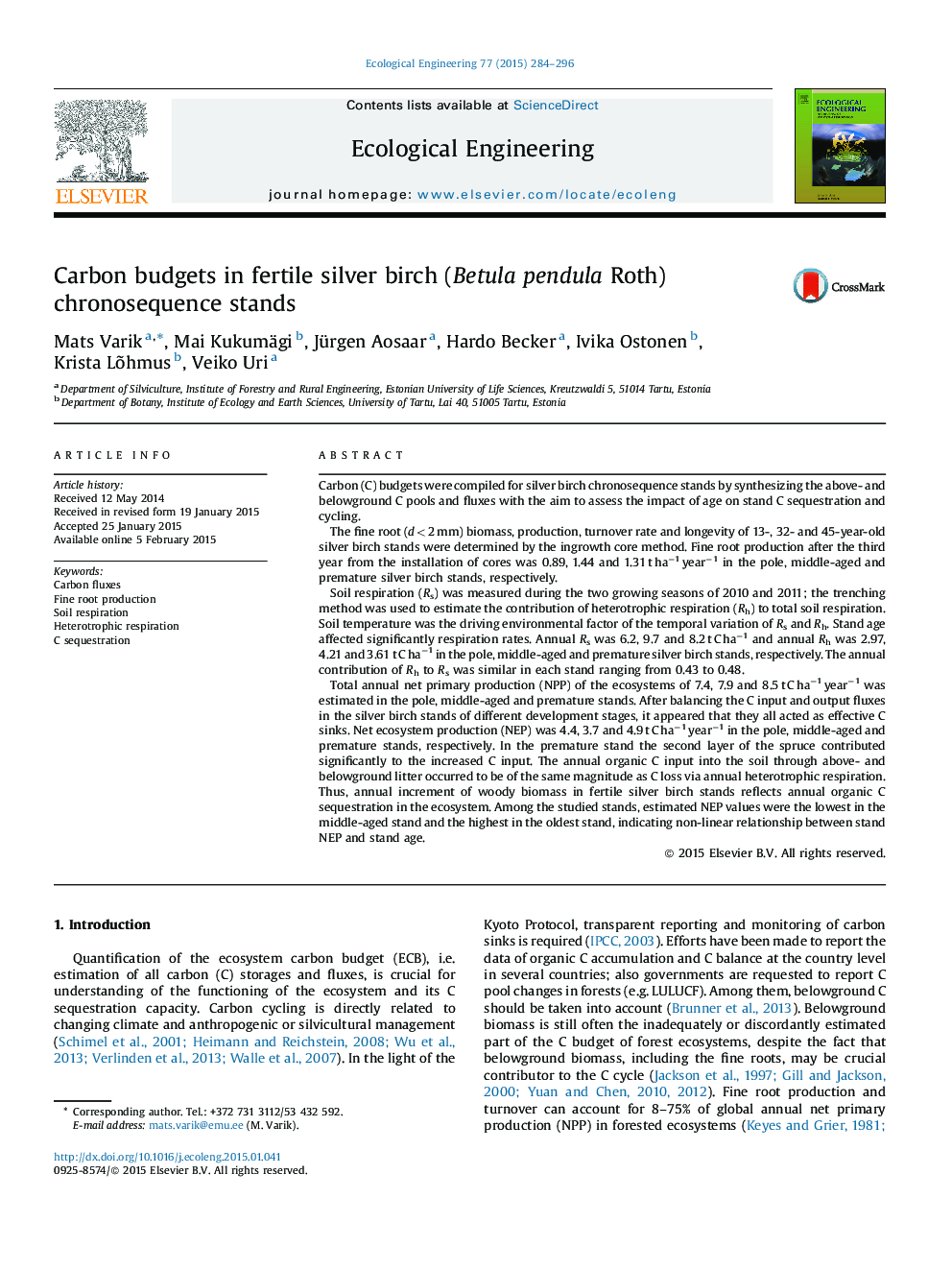| کد مقاله | کد نشریه | سال انتشار | مقاله انگلیسی | نسخه تمام متن |
|---|---|---|---|---|
| 4389275 | 1618022 | 2015 | 13 صفحه PDF | دانلود رایگان |

• Silver birch stands of different development stages act as effective C sinks.
• The main C sink was the woody biomass of the trees.
• Woody biomass increment of fertile silver birch stand reflects annual C sequestration in the ecosystem.
• Annual soil heterotrophic respiration is of the same magnitude as the annual organic C input into the soil through litter.
Carbon (C) budgets were compiled for silver birch chronosequence stands by synthesizing the above- and belowground C pools and fluxes with the aim to assess the impact of age on stand C sequestration and cycling.The fine root (d < 2 mm) biomass, production, turnover rate and longevity of 13-, 32- and 45-year-old silver birch stands were determined by the ingrowth core method. Fine root production after the third year from the installation of cores was 0.89, 1.44 and 1.31 t ha−1 year−1 in the pole, middle-aged and premature silver birch stands, respectively.Soil respiration (Rs) was measured during the two growing seasons of 2010 and 2011; the trenching method was used to estimate the contribution of heterotrophic respiration (Rh) to total soil respiration. Soil temperature was the driving environmental factor of the temporal variation of Rs and Rh. Stand age affected significantly respiration rates. Annual Rs was 6.2, 9.7 and 8.2 t C ha−1 and annual Rh was 2.97, 4.21 and 3.61 t C ha−1 in the pole, middle-aged and premature silver birch stands, respectively. The annual contribution of Rh to Rs was similar in each stand ranging from 0.43 to 0.48.Total annual net primary production (NPP) of the ecosystems of 7.4, 7.9 and 8.5 t C ha−1 year−1 was estimated in the pole, middle-aged and premature stands. After balancing the C input and output fluxes in the silver birch stands of different development stages, it appeared that they all acted as effective C sinks. Net ecosystem production (NEP) was 4.4, 3.7 and 4.9 t C ha−1 year−1 in the pole, middle-aged and premature stands, respectively. In the premature stand the second layer of the spruce contributed significantly to the increased C input. The annual organic C input into the soil through above- and belowground litter occurred to be of the same magnitude as C loss via annual heterotrophic respiration. Thus, annual increment of woody biomass in fertile silver birch stands reflects annual organic C sequestration in the ecosystem. Among the studied stands, estimated NEP values were the lowest in the middle-aged stand and the highest in the oldest stand, indicating non-linear relationship between stand NEP and stand age.
Journal: Ecological Engineering - Volume 77, April 2015, Pages 284–296